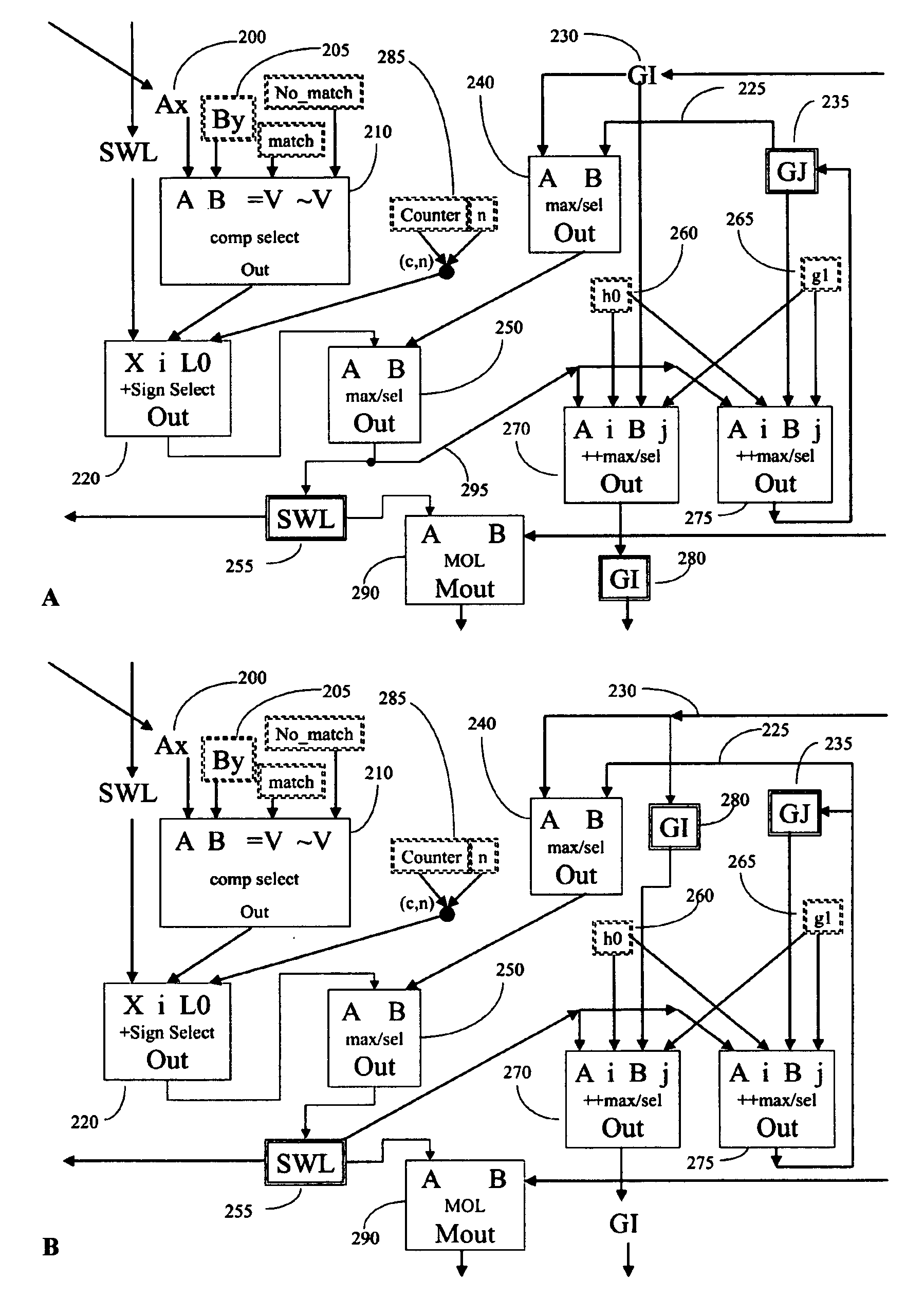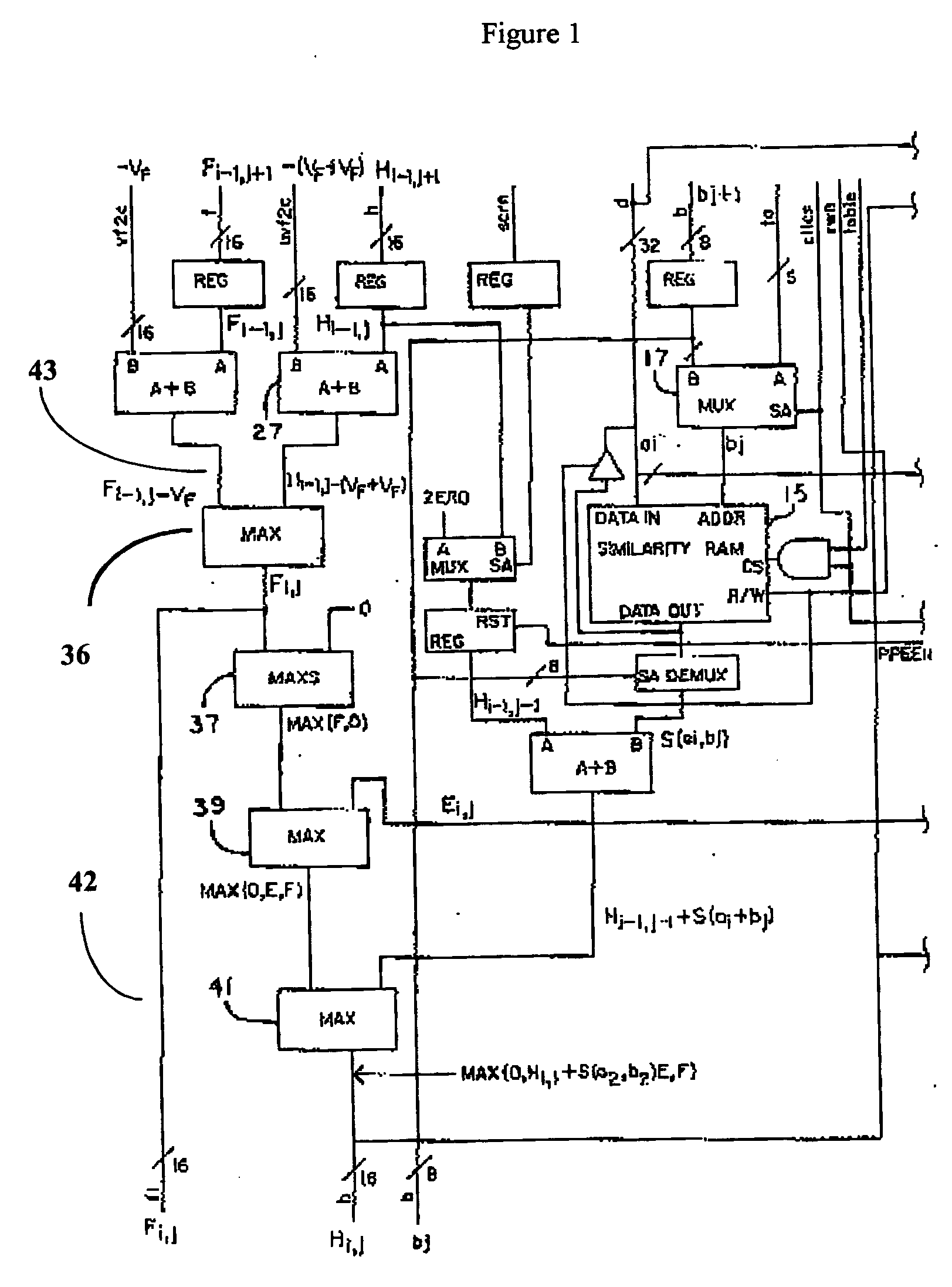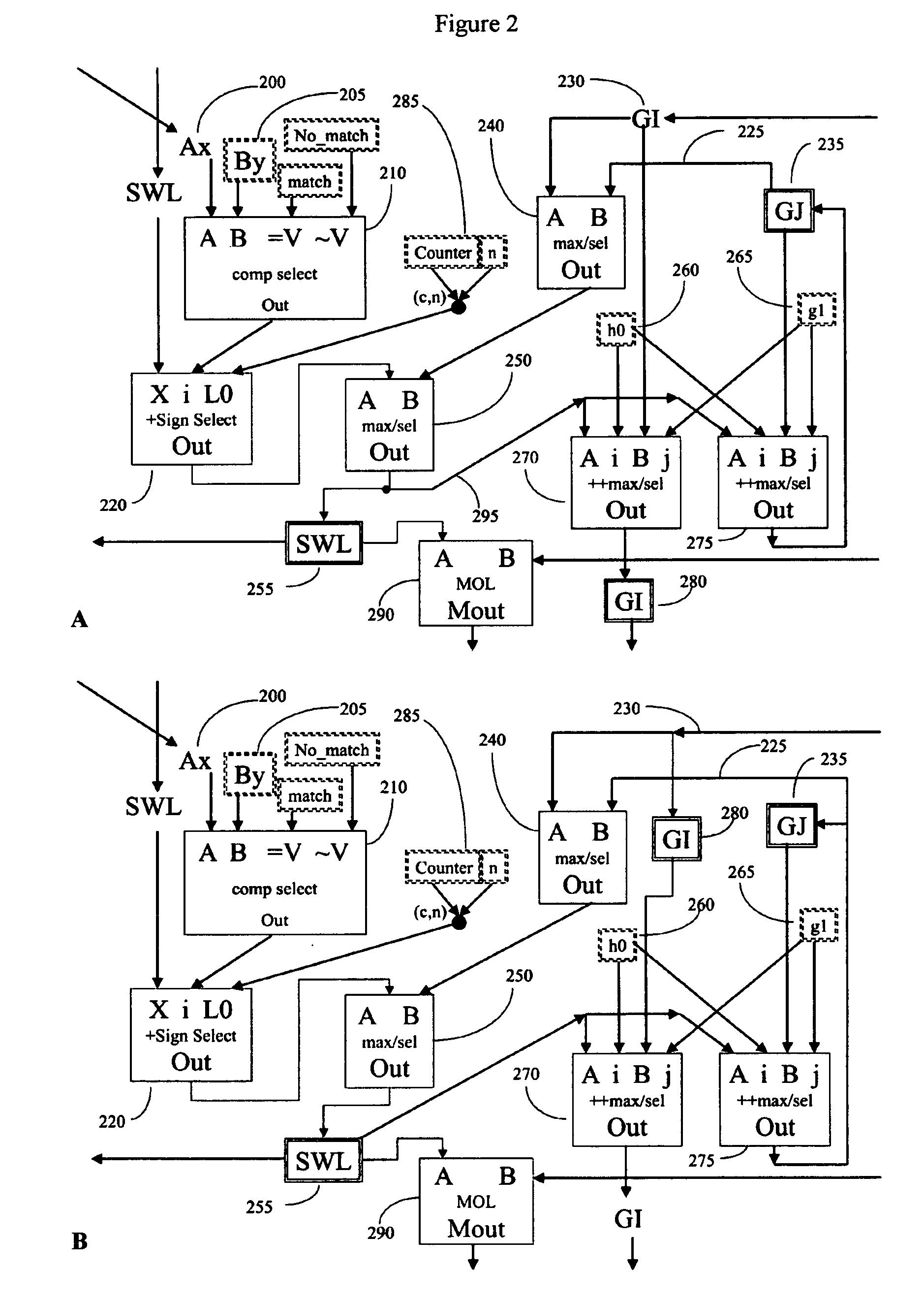Processors for multi-dimensional sequence comparisons
- Summary
- Abstract
- Description
- Claims
- Application Information
AI Technical Summary
Benefits of technology
Problems solved by technology
Method used
Image
Examples
Embodiment Construction
[0110] Prior art processors contain a variety of subcomponents (adders, comparators, registers, and the like) and require a number of clock cycles to complete an analysis. Because the analysis requires multiple clock cycles, only a fraction of the processors' subcomponents are used during each clock cycle. Those processor components that are unused in any given clock cycle represent wasted resources. If these components are not fully utilized, then efficiency can be improved by using fewer components per processor, and putting more processors on a chip; redesigning the processor to more fully utilize all components by pipelining the operations, or a combination of the two.
[0111] We have found that by employing novel and improved processor designs that make more efficient use of processor subcomponents, significant improvements in calculating efficiency over the prior art are possible. Large-scale bioinfomatic systems of the prior art typically can cost from millions to hundreds of ...
PUM
 Login to View More
Login to View More Abstract
Description
Claims
Application Information
 Login to View More
Login to View More - R&D
- Intellectual Property
- Life Sciences
- Materials
- Tech Scout
- Unparalleled Data Quality
- Higher Quality Content
- 60% Fewer Hallucinations
Browse by: Latest US Patents, China's latest patents, Technical Efficacy Thesaurus, Application Domain, Technology Topic, Popular Technical Reports.
© 2025 PatSnap. All rights reserved.Legal|Privacy policy|Modern Slavery Act Transparency Statement|Sitemap|About US| Contact US: help@patsnap.com



